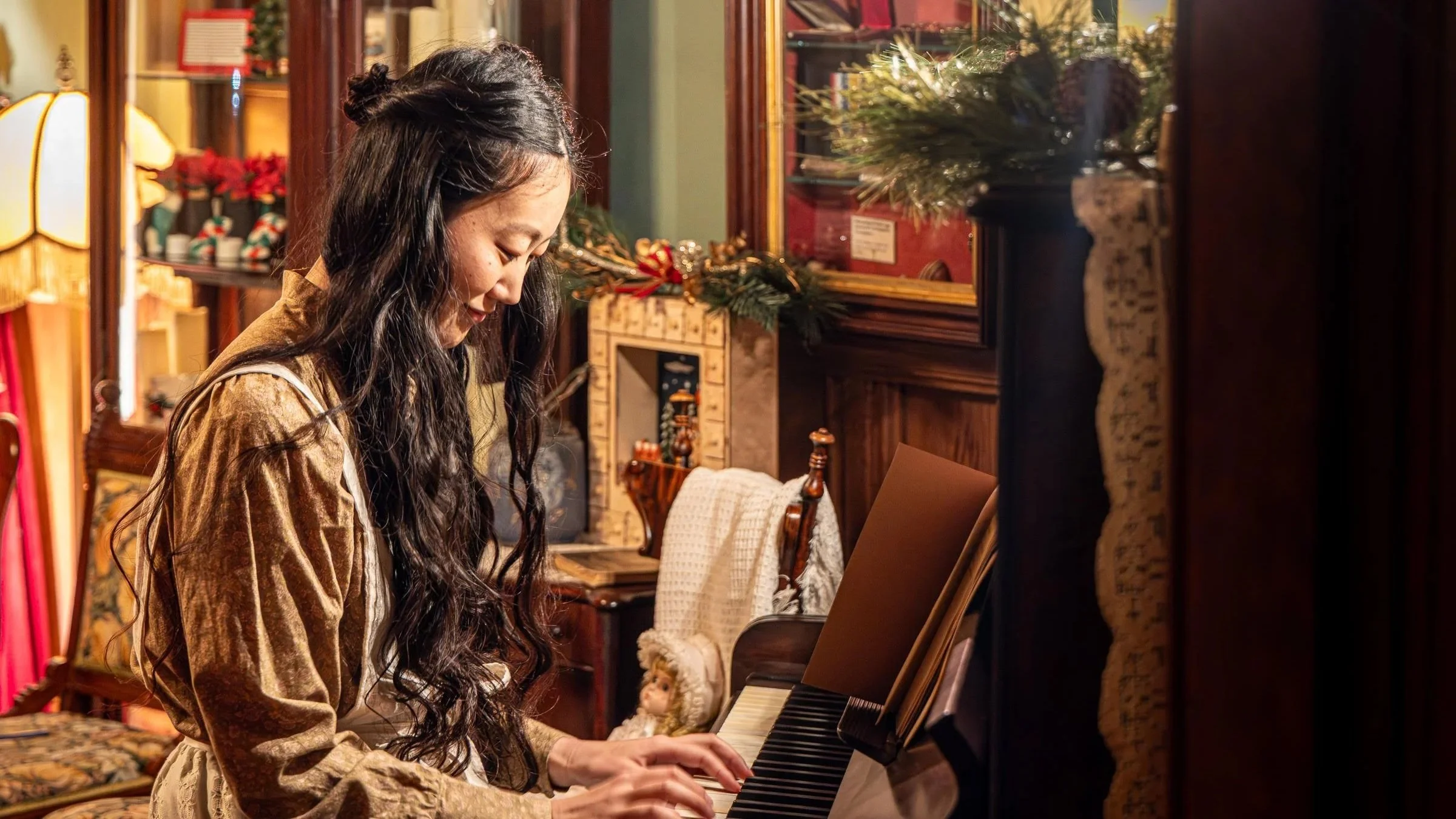The Cave takes the climate crisis to the cabaret, giving voice to the animals
Creators John Millard and Martha Ross reflect on the timeliness of a song cycle about wildlife hiding from a raging forest fire
John Millard, Andrea Koziol, Derek Kwan, and Alex Samarash in The Cave. Photo by Delal Hagos
J Mar Electric’s The Cave is at The Cultch Historic Theatre from November 10 to 20
WHEN STIR REACHES Toronto theatre artists John Millard and Martha Ross, they’re taking their apocalyptic animal cabaret, The Cave, on the road, touring B.C. towns like Vernon, Nelson, and Revelstoke, where the show’s setting—a raging forest fire—is all too familiar.
“We’ve been having some interesting talkbacks with these people who live in the forest and have dealt with the fires,” relates composer-musician Millard from a road stop at Cranbrook. “For the writers, Martha and I and Tomson [Highway], we’ve been in the Interior and Manitoba and on the Coast when the smoke gets so thick and it gets so dry. But in Toronto, it's a bit abstract.”
“I think The Cave is for BC,” says Ross, who with her partner in life and art runs the T.O. company JMar Electric. “I think it’s really important to keep looking at what's happening in our world.”
Their creative take on the climate crisis finally makes its way live to Vancouver’s Cultch Historic Theatre this week, after screening here in digital form during the pandemic. And as we all know after the Lower Mainland’s smoke-clogged “hot-umn”, the forest-fire setting is also all too topical.
The sung-through song cycle features a live band (complete with accordion and clarinet) and music with shades of Kurt Weill and Tom Waits. It tells the tale of a menagerie of animals—from Moose to Skunk to Snake—who seek refuge from the smoke and flames in a Bear’s cave. There, each tells a story, where they reflect on the human recklessness that has led to their predicament, and where anxiety builds as the flames encroach. Millard, who’s the frontman for Toronto band the Polka Dogs outside of his theatre work, is the banjo-playing MC-narrator.
Do not expect realistic wildlife in full-fledged animal costumes. Instead, Allie Marshall has created stylized apparel: a spider wears a weblike black hoop skirt and a skunk sports black hoods with a strip of white fuzz, and a bear appears in a furry coat. Their faces are caked in the white of Weimar-era cabarets.
Initially in the creative process, Millard and Ross were directly inspired by real animals.
“It partly came from trips we’ve taken across the country. Driving through southern Saskatchewan, this white-tailed deer might just stop on the side of the road and check you out,” Millard says. “Or seals in the bay on the West Coast would just stare at you while you’re swimming. I mean I’ve always been curious about creatures and what they think. I do love them, and I feel bad that we've been such bad custodians and fellow creatures on the planet.
“Of course it’s not ‘animals singing’,” he adds of the show. “We had to get through that pretty fast. It’s us trying to understand ourselves better through the eyes of animals….We didn’t want to anthropomorphize.”
He says director Adam Paolozza worked extensively with each cast member to develop a physical language individual to each creature—but also drawing on cabaret performance style.
“We went for part night club, part cave, part cabaret, part animal,” explains Ross. “So, yeah, it really is a hybrid between animal and human.”
Interwoven, thanks to lyricist Highway, is a lot of offbeat humour along the way, as well as references to Indigenous mythology, worldviews, and spirituality; Cree interweaves with English in the lyrics. This version also includes atmospheric new projection designs from Bruce Alcock.
The idea, say Ross and Millard, is to move and affect people in different ways around the topic of the climate crisis—a subject that can feel numbing when the skies are clogged with smoke, as they were in so many parts of BC this summer and fall.
“There was an article I read by Seth Klein…where he said so many people know about the climate emergency, and yet you get so busy you have to drive your car and it's too hard to really be good stewards,” Ross says. “So he said, ‘We have to find art that that’s emotional, that allows an emotional story.’ I took note of that.”













